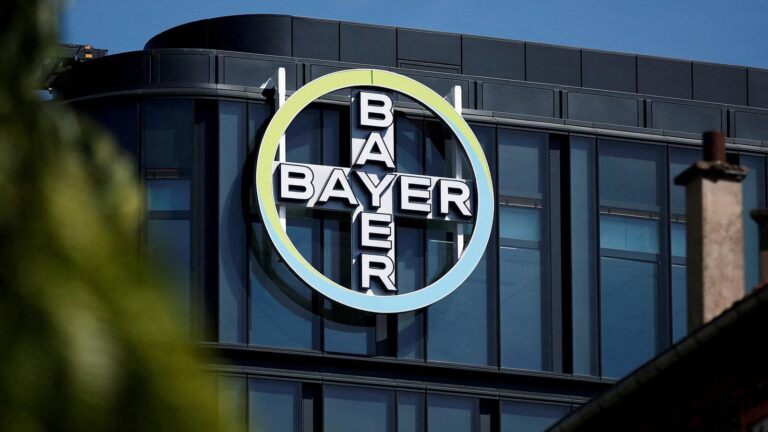Significant Jury Verdict Holds Bayer Accountable for PCB Contamination in Washington School
A Washington state jury has delivered a landmark ruling, ordering pharmaceutical conglomerate Bayer to pay $100 million in damages due to the contamination of a local school with polychlorinated biphenyls (PCBs). This verdict represents a pivotal moment in environmental litigation, reflecting heightened awareness and concern over toxic chemical exposure in public institutions. The trial scrutinized Bayer’s role in the presence of PCBs—chemicals notorious for their adverse health effects—within the school’s infrastructure, spotlighting the broader issue of corporate responsibility in environmental pollution and the adequacy of safety standards in educational settings.
The jury’s decision was influenced by several critical considerations:
- Negligence Evidence: Records demonstrated Bayer’s inadequate containment and disposal of PCB waste despite awareness of its hazards.
- Health Impact on School Community: Expert medical testimony linked PCB exposure to increased cancer risks and other chronic illnesses among students and staff.
- Environmental Cleanup Costs: The financial burden of decontaminating the school’s soil and facilities factored heavily into the compensation awarded.
| Detail | Information |
|---|---|
| Jury Composition | 12 jurors |
| Trial Length | Four weeks |
| Damages Awarded | Compensatory and punitive totaling $100 million |
| Location | Washington State |
Health and Community Consequences of PCB Exposure in Schools
Exposure to PCBs in educational environments poses significant health hazards to children, educators, and the surrounding community. Historically utilized in electrical transformers, caulking, and fluorescent lighting, PCBs have been banned since the late 1970s due to their persistence and toxicity. In the affected Washington school, elevated PCB concentrations were found in building materials such as sealants and light fixtures, leading to contamination of indoor air and dust. This exposure not only jeopardized health but also disrupted educational activities and heightened community concerns about long-term effects.
Notable impacts include:
- Health Risks: Increased incidence of respiratory ailments and potential developmental delays among children.
- Operational Interruptions: School closures and expensive remediation projects to remove contaminated materials.
- Community Distrust: Growing apprehension among parents and staff regarding transparency and safety protocols.
| Impact Area | Description | Community Response |
|---|---|---|
| Health | High PCB levels detected in indoor environments | Increased health screenings and medical monitoring |
| Environment | Removal of contaminated building components required | Support for environmental cleanup funding initiatives |
| Education | Disrupted classes and relocation of school activities | Calls for improved infrastructure safety standards |
Legal Precedents Established by Bayer’s PCB Contamination Verdict
The recent judgment against Bayer sets a transformative precedent in environmental law, particularly concerning corporate liability for legacy pollutants. This case reinforces the judiciary’s commitment to holding manufacturers accountable for the long-term consequences of toxic chemical contamination, even when the substances were introduced decades ago. It empowers affected communities nationwide to pursue justice and compensation for environmental health damages, signaling a shift toward more rigorous enforcement and remediation efforts.
Key legal principles emerging from this ruling include:
- Broadened Accountability for Historical Pollution: Companies can be held liable for environmental harm caused by chemicals used prior to regulatory bans.
- Strengthened Community Legal Rights: Local governments and residents gain enhanced ability to claim reparations for health impacts and property devaluation.
- Framework for Large-Scale Environmental Settlements: The verdict serves as a benchmark for future multi-million-dollar claims involving industrial toxins.
| Legal Aspect | Implication | Projected Influence |
|---|---|---|
| Corporate Liability | Expanded responsibility for legacy environmental damage | High |
| Regulatory Oversight | Increased enforcement of chemical disclosure and safety | Moderate |
| Community Compensation | Greater access to funds for remediation and health impacts | Significant |
Enhancing Corporate Responsibility and Environmental Protection Measures
To avert future environmental crises and safeguard public health, it is imperative that corporations adhere to elevated standards of accountability. Transparent disclosure of chemical usage and proactive environmental management must become standard practice. Regulatory bodies should implement more frequent and rigorous inspections, coupled with substantial penalties for non-compliance, to deter negligent behavior. Such measures will encourage companies to prioritize environmental safety alongside profitability, reducing the risk of toxic exposures like PCBs.
Corporations are encouraged to adopt comprehensive environmental stewardship strategies, including:
- Routine environmental risk evaluations and timely remediation planning
- Deployment of sustainable chemical management and disposal systems
- Ongoing engagement with communities to maintain transparency and trust
- Investment in research and development of safer chemical alternatives
The table below compares current industry practices with recommended approaches for environmental accountability:
| Accountability Dimension | Current Industry Practice | Recommended Standard |
|---|---|---|
| Transparency in Reporting | Inconsistent and delayed disclosures | Mandatory real-time chemical usage reporting |
| Regulatory Compliance | Primarily reactive inspections | Proactive, frequent, and comprehensive audits |
| Community Involvement | Limited communication and engagement | Collaborative public consultations and updates |
| Waste and Chemical Management | Standard disposal methods | Zero-hazard, environmentally sustainable solutions |
Conclusion: Implications of the Bayer PCB Verdict for Environmental Justice
The $100 million judgment against Bayer represents a watershed moment in the fight against environmental contamination linked to industrial toxins. As communities and environmental advocates intensify demands for corporate accountability and effective remediation, this ruling highlights the judiciary’s crucial role in addressing public health risks associated with legacy pollutants. While Bayer has yet to announce any appeal plans, the verdict serves as a stark warning to corporations about the financial and reputational consequences of neglecting environmental safety, especially in sensitive settings like schools. Ongoing coverage will track developments as this important case unfolds.







